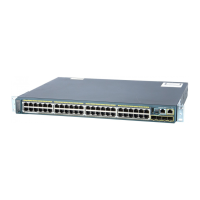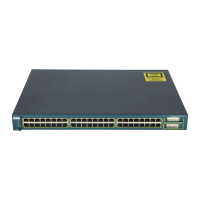Chapter 13
Quality of Service
See the following sections to configure and use these features:
■ 13-1: QoS Theory: Discusses the various operations and mechanisms that make up
quality of service (QoS) as a whole
■ 13-2: QoS Configuration: Explains the sequence of steps necessary to configure
and monitor QoS on a Catalyst switch
■ 13-3: QoS Data Export: Presents the configuration steps needed to gather and send
QoS statistics information to external collection devices
13-1: QoS Theory
■ QoS defines policies on how switches and routers deliver different types of traffic. A
QoS domain is the entire collection of network devices that are administered so that
they adhere to the QoS policies.
■ To guarantee that QoS policies are met, QoS must be configured on all switches and
routers end-to-end across the network.
■ Traffic should be classified at the edges of the QoS domain. Where this isn’t possi-
ble, classify traffic as close as possible to the source. Classification can occur at
Layer 2 or Layer 3, depending on the network functions available at the edge.
■ The top portion of Figure 13-1 shows QoS operations on a Catalyst switch, includ-
ing the following:
■ Classification: Selects specific traffic to which a QoS policy can be applied. The
priority values of inbound frames can also be trusted or reclassified.
■ Policing: Limits the bandwidth used by a traffic flow. Policers can control aggre-
gate or individual flows and can also mark or drop traffic.
